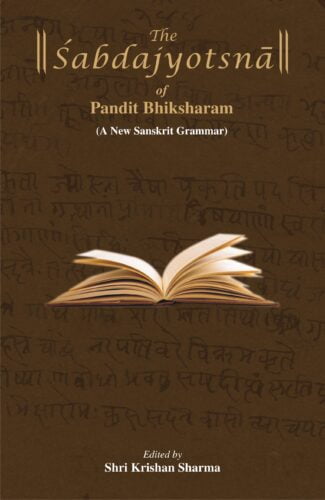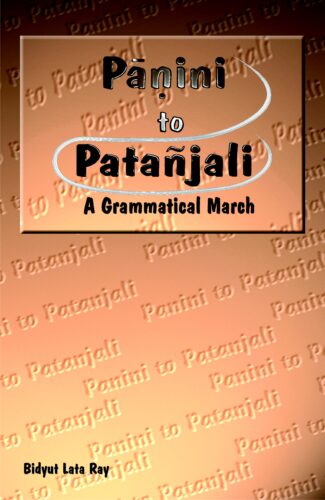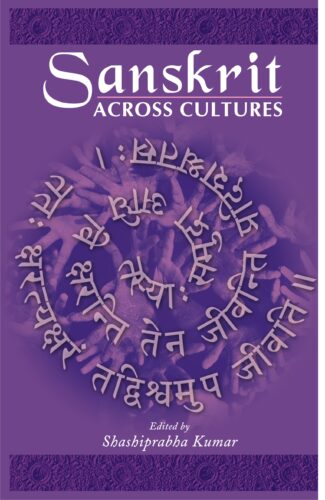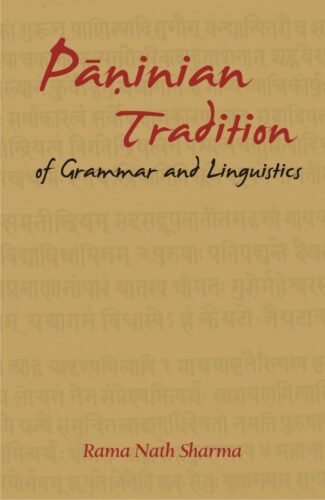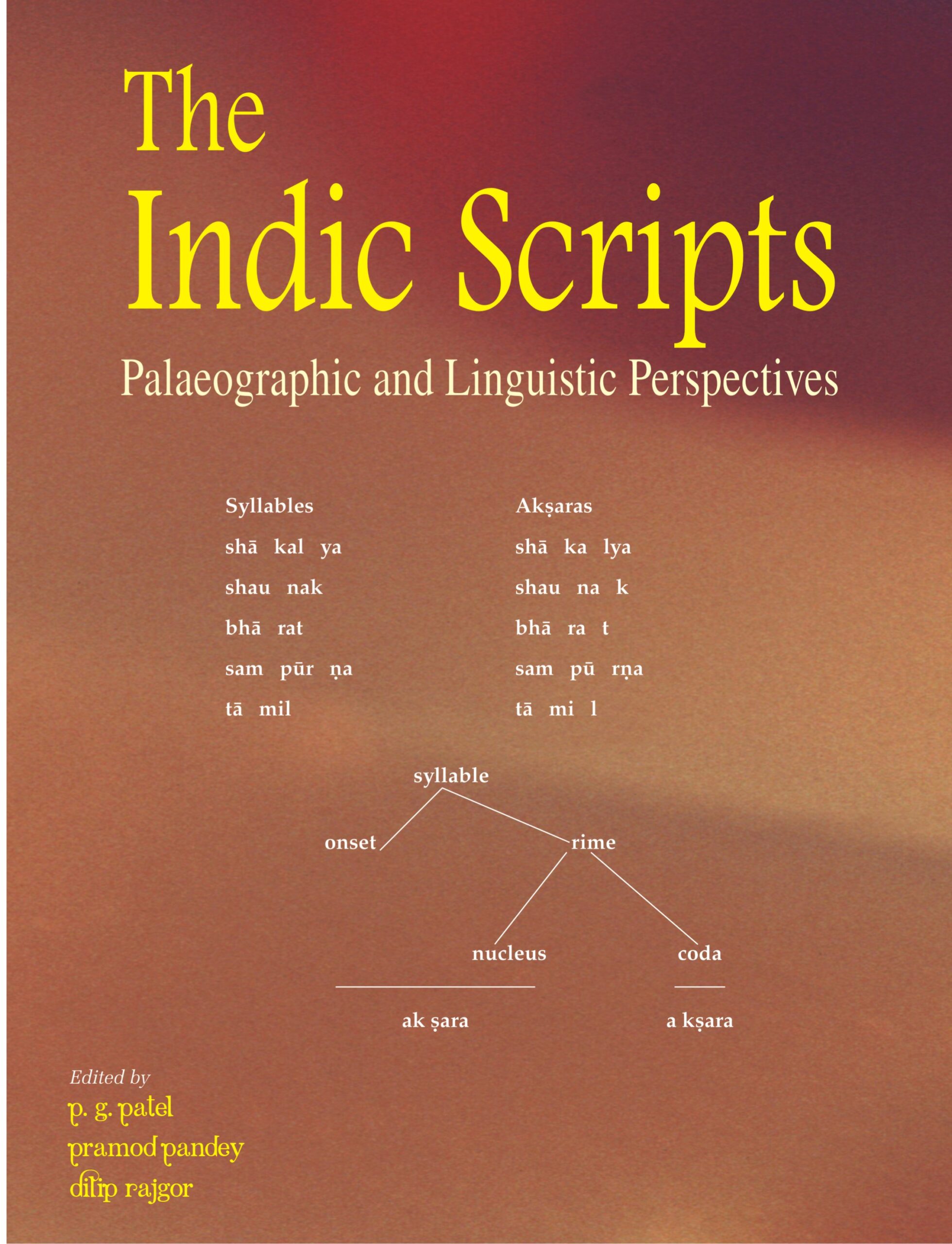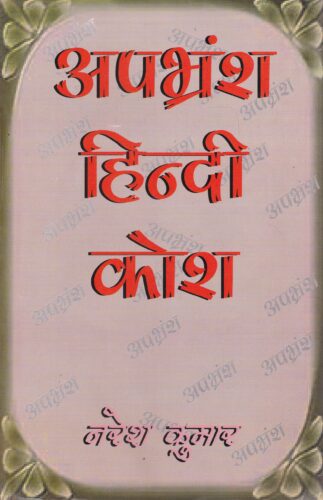

Apbharamsa Hindi Kos...
Apbharamsa Hindi Kosha
Apabhramsa-Hindi-Dictionary by: Naresh KumarThis Dictionary of Hindi Apabhramsa gives in detail the grammatical importance of words, their meanings, correct spellings, the alternate words and their various usages as mentioned by lexicographer Naresh Kumar.
₹1,500.00 Original price was: ₹1,500.00.₹1,350.00Current price is: ₹1,350.00.
ISBN: 9788124601365
Year Of Publication: 1999
Edition: 1st
Pages : xlv, 869
Language : Hindi
Binding : Hardcover
Publisher: D.K. Printworld Pvt. Ltd.
Size: 23 cm.
Weight: 1500
This Dictionary of Hindi Apabhramsa gives in detail the grammatical importance of words, their meanings, correct spellings, the alternate words and their various usages as mentioned by lexicographer Naresh Kumar.

- Sale!Sabdajyotsna of Pandit Bhiksharam by: Shri Krishan Sharma
₹250.00Original price was: ₹250.00.₹225.00Current price is: ₹225.00.Pt. Bihiksharam (18871975) composed the Sabdajyotsna with a view to teach Sanskrit grammar to an ordinary student in a simple style. The author adopts pratyahara, anuvritti, anubandha, etc. in his work to impart the abridgement on the pattern of Ashtadhyayi and Pratishakhyas. For this purpose, the author tries his best to simplify the tough process of learning Sanskrit grammar.
The sutras of the Shabdajyotsna are composed subject wise (according to prakarana) on the pattern of prakriya works. Only samjna- and sandhi-prakaranas of this work were published in 1958. The rest of the text in Devanagari remained in the form of manuscript lying unattended. The script, whatever traced, was made available to Prof. Shri Krishan Sharma for the editing purposes by his grandson. However, the samasa-prakarana and some portions of taddhita-prakarana still remain untraceable.
In spite of some minor gaps, the work deserves recognition and appreciation in the academic circle. The author of the Sabdajyotsna aimed at and indeed succeeded in fully exposing the rules of Sanskrit grammar in lucid and clear diction.
The work, a pioneering attempt of its kind, may very well be considered as a significant contribution to the tradition of Sanskrit grammar, benefiting students, teachers and researchers alike. - Sale!Panini to Patanjali by: Bidyut Lata Ray
₹700.00Original price was: ₹700.00.₹630.00Current price is: ₹630.00.The book presents scholarly essays examining the origin and evolution of Sanskrit grammar in ancient India from the time of Panini to Patanjali. It focuses on the monumental works in Sanskrit grammar, the Ashtadhyayi of Panini, the Varttikas of Katyayana and the Mahabhashya of Patanjali and the impact of these on the Sanskrit grammatical tradition. The essays critically analyse the Paninian system of Sanskrit grammar: its style and technicalities and particularly technical terms and devices used in the Ashtadyayi. Discussing, chronologically, the systems of grammar that emerged after Panini, they study the style and system of the Varttikas and the unique contribution of Katyayana in incorporating the element of philosophy of language interpreting difficult words in the Ashtadyayi on the basis of philosophical doctrine. They enumerate the tradition and technique of Patanjali: the style, language, logic, semantics, and scientific interpretation of his sutras and emphasise the importance of the Mahabhashya as the basis of post-Paninian Sanskrit grammar systems. There are also discussions on the dates of Panini and Patanjali. Throughout, the authors refer and quote from the works of these masters and other ancient Indian texts as well as from commentaries and sub-commentaries, supplements, logical interpretations and arguments on their writings and the system of Sanskrit grammar. The volume will interest and benefit scholars and researchers on ancient Indian grammar and linguistics in particular.
- Sale!Sanskrit Across Cultures by: Shashi Prabha Kumar
₹480.00Original price was: ₹480.00.₹432.00Current price is: ₹432.00.Sanskrit may be said to be one of the oldest extant languages of the Indo-European group of languages. It is hailed as the memory of the human race and its earliest cultural history. No serious study of the world civilization and cultures of different countries will be possible without understanding Sanskrit as it evolved and influenced other languages of the world or bears association with them. This volume has articles that attempt such an understanding of the Sanskrit language. Scholars trace the link of Sanskrit with various countries of the world and their cultures and languages. They throw light on Sanskrit grammar as recorded in Chinese works and contributions of Sanskrit to Chinese linguistics; on the many Sanskrit manuscripts available in Japan; and similarities and regularities in the phonetic system, grammar and vocabulary of Sanskrit and Russian. They view links between Sanskrit and the Slavonic languages, German, English, Persian and the Indonesian languages, examining mutual borrowings. They explain the way translations from one language to another have affected preservation and dissemination of knowledge. The articles, a result of meticulous study and marked by simplicity and clarity in expression, will be interesting and informative to a range of scholars of Indology.
- Sale!Paninian Tradition of Grammar and Linguistics by: Rama Nath Sharma
₹900.00Original price was: ₹900.00.₹810.00Current price is: ₹810.00.The Sanskrit Tradition of Grammar and Linguistics, along with its history, is presented in view of texts and trends, where structure and content of the Ashtadhyayi find their focus on rule formulation, interpretation, and interaction. My proposal of derivation is made in view of what Panini does (acarya-pravritti) with rules of the Ashtadhyayi, and what statements (vyakhyana) were made on a given topic by Patanjali.
My presentation is all tied in with the interpretive conventions # (2) yathoddeshah samjna-paribhasham, and # (3) karyakalam samjna-paribhasham (PS) of Nagesha. It yields two kinds of ekavakyata considerations where one facilitates interpretation of a rule within adhikakars, and the other facilitates ekavakyata across domains, with no anuvritti consideration. Finally the derivational history yields a string of definitions which not only offer direction to individual derivations but also projects what rules will apply when and on what kind of string. Why does Panini repeat the use of definition terms in the Ashtadhyayi, so that they can clearly chart the path of derivation, and facilitate reconstruction of history of derivation? This all is new, and is in consonance with the tradition. The last section of this book presents a comprehensive view of modern studies on Panini to modern times. - Sale!Indic Scripts by: P.G. Patel, Pramod Pandey, Dilip Rajgor,
₹1,400.00Original price was: ₹1,400.00.₹1,260.00Current price is: ₹1,260.00.This volume presents the advances in the ongoing research on Brahmi and its daughter scripts used in the present day India. It brings together two main trends: evolutionary-historical development and linguistic grounding. This is the first attempt to cross-fertilize palaeography and linguistics. The palaeographic papers cover the main issues in the decipherment of the Indus Valley script, the origin and evolution of Brahmi, and the palaeographic methods and considerations employed in the decipherment of scripts. These present different trends and arguments of writers on the origin of Brahmi as having been around the Mauryan era or at a much earlier stage, relate to broader historical and cultural issues. They also deal with the need for the use of established and more current palaeographic techniques in classifying regional and stylistic variants of scripts. The linguistic papers in the volume explore the issues of the roots of the orthographic unit aksara in Vedic phonetics, its claim as a minimal articulatory phonetic unit, and the properties of Brahmi as a generative writing system. The philosophical and linguistic underpinning of the concept aksara is shown to thread its use in the varieties of treatises, from the Vedas to phonetic texts. The papers help in providing linguistic evidence for historical accounts of the script as an invention at a given time or as an evolving evolutionary system, apart from relating the development of the script to the linguistic history of India. Palaeographers epigraphists, linguists and computational scientists, will find this volume interesting and useful.



